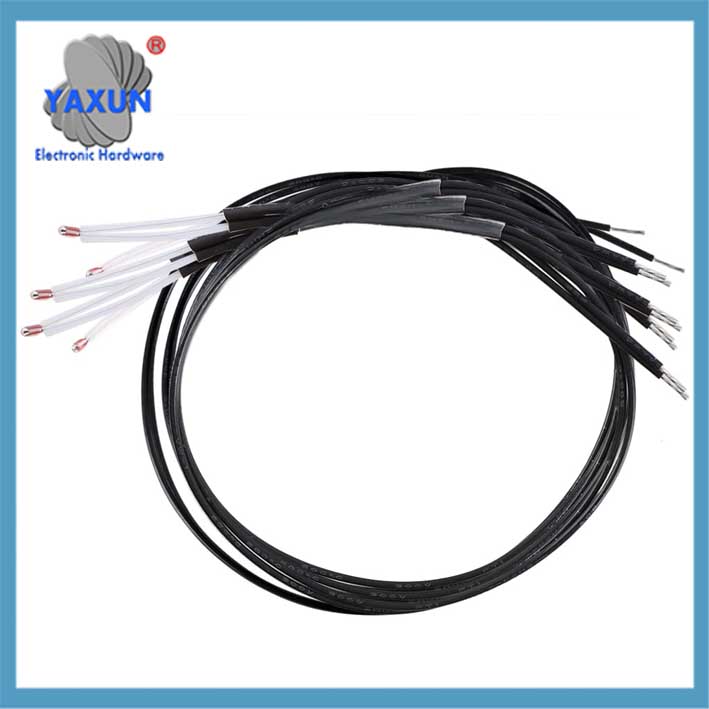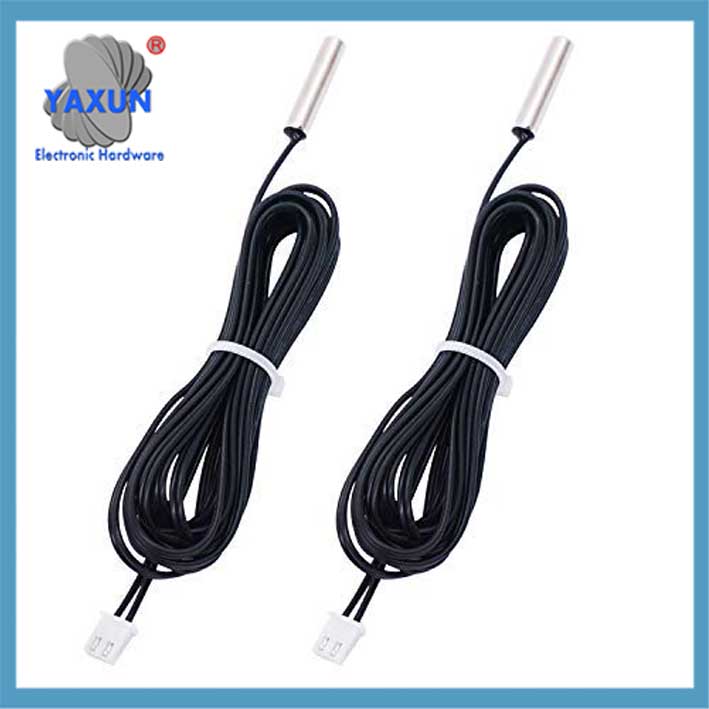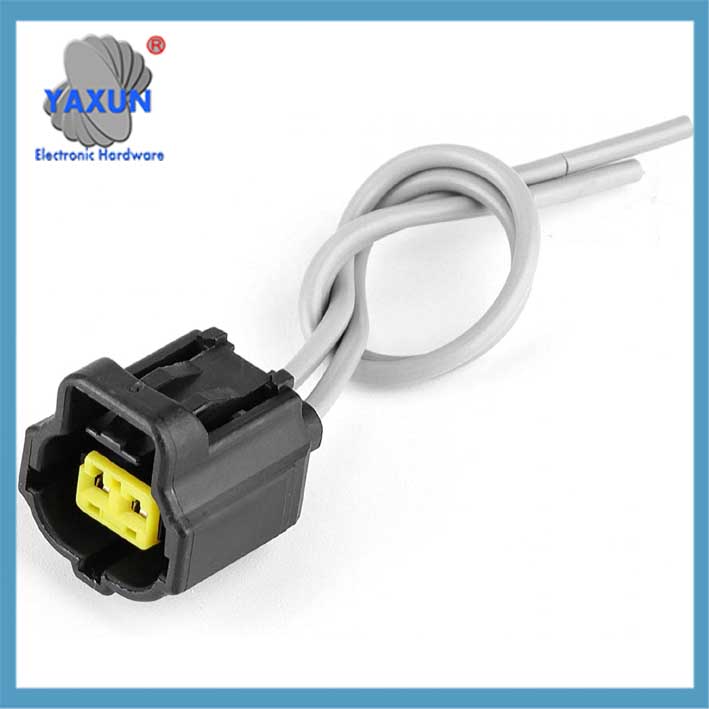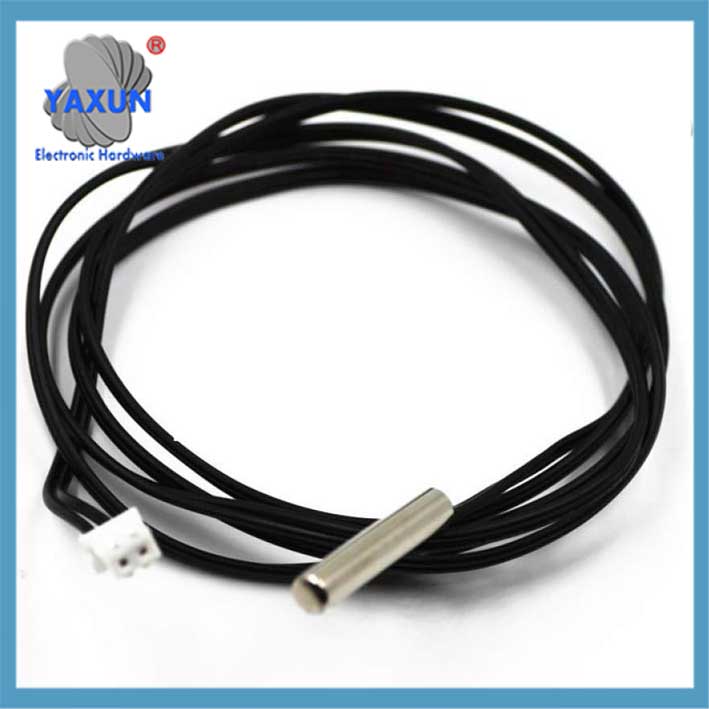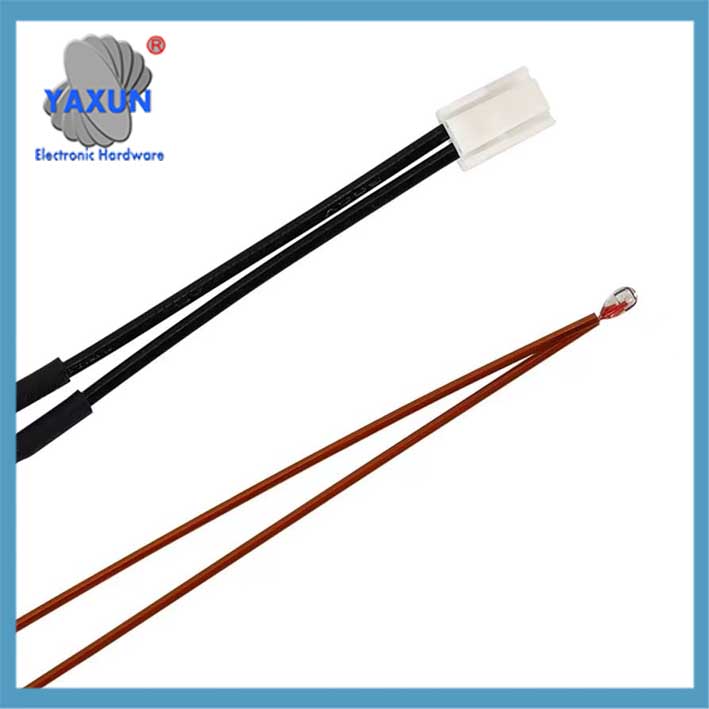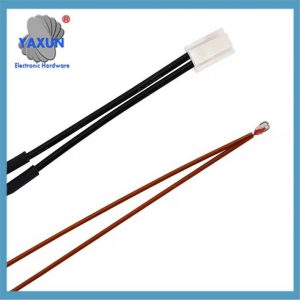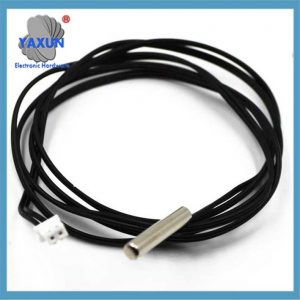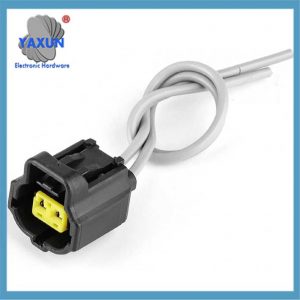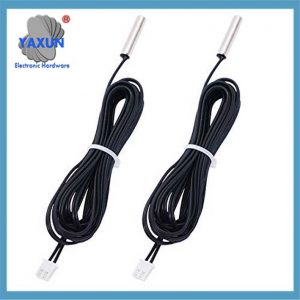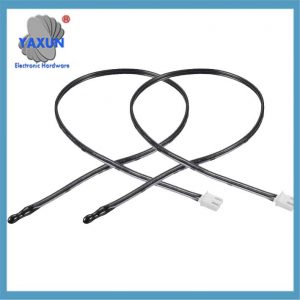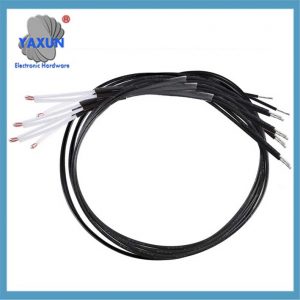catégories de produits
- Disjoncteur thermique 20
- Porte-boîte à fusibles 36
- Capteur de température 67
- Interrupteur thermique 64
- Fusible de voiture 19
- Fusibles boulonnés 7
- fusion thermique 32
- fusibles à montage en surface 12
- thermistance 22
- Porte-fusible à montage sur circuit imprimé 27
- Faisceau de câblage 6
- Porte-fusibles à lame 17
- thermostat 46
- Fusible électrique 14
Mots clés du produit
Messages récents
Harnais de fil de capteur de thermistance & Ensemble de câbles
C'est un capteur de type de montage de surface fixé sur les appareils avec vis de montage de taille différente requise . Les produits peuvent être personnalisés en fonction de différentes températures. C'est un seul (1) Fais de thermistance ou de fil de ventilateur. Harness measures 36″ (914.4mm), 22 AWG.Vous pouvez choisir la carte de circuit imprimé (Ambo, Mini-rambo,
Temperature sensor wiring harness & Cable Assembly for ntc, PTC. Common temperature probe packages are: verre, epoxy resin, threaded, céramique.
Thermistor sensors are heat-sensitive semiconductor resistors designed for temperature measurement and compensation. Its portfolio covers the NTC thermistor series with excellent long-term stability in high-temperature and high-humidity environments, such as ultra-small products for smartphones and tablet terminals, applications automobiles, LED modules, and industrial applications. High-precision resistor tolerances and B-values give chip NTC thermistors extremely precise temperature sensing capabilities.
Temperature detection of LED flash substrate based on thermistor sensor harness
NTC thermistor is a thermal resistance element whose resistance drops sharply as the temperature increases. En utilisant cette caractéristique, in addition to being designed as a temperature sensor, it is also used as a temperature protection element to prevent circuit overheating.
By installing an NTC thermistor close to the heat source, the heat source temperature can be accurately detected. Cependant, due to limitations such as substrate size and PCB wiring, it is sometimes necessary to install it away from heat sources.
We assumed this situation, used the LED on the LED flash substrate as the heat source, and confirmed the measured temperature difference due to the different mounting positions of the LED and NTC thermistor through heating simulation. En outre, the influence of substrate thickness was confirmed and the results are explained.
Application notes
Fault manifestations and countermeasures of NTC thermistors in actual use
A negative temperature coefficient (CTN) thermistor is a semiconductor resistor whose resistance decreases as temperature increases, and the rate of change in resistance is large.
It has a wide range of applications, and its main uses include temperature detection in electronic equipment and temperature compensation in various applications, such as modular products.
When using NTC thermistors, users must ensure that they are used correctly.
Improper use can result in the product not operating to its full potential and, in the worst case, malfunctioning.
Below we will list two manifestations of NTC thermistor failure caused by incorrect use, namely “cracks” and “substrate melting”.
Explain the causes of the failure and provide corresponding countermeasures.
Product type characteristics:
Sensor Type: HVAC/R, Surface Sensor
Electrical characteristics:
Résistance [KΩ] at 25°C (kΩ): 10
Beta value (25/85) (K): 3976
Mechanical accessories:
Wire/Covering: 22 AWG zipcord
Longueur de fil: 3048 mm [120 dans]
Usage environment:
Plage de température de fonctionnement: -40 – 105 °C [ -40 – 221 °F ]
Reference temperature of resistor: 25 °C [77 °F]
Temperature Accuracy (°C): ± .2 (0 – 70), ± .2 (0 – 70)
Resistor Tolerance (%): ±.88
Probe characteristics:
Probe: Nickel plated brass
Une thermistance est une résistance du capteur dont la résistance change à mesure que la température change. Selon différents coefficients de température, they are divided into positive temperature coefficient thermistor (Thermistance PTC) and negative temperature coefficient thermistor (Thermistance CTN). The resistance value of a positive temperature coefficient thermistor increases as the temperature increases, and the resistance value of a negative temperature coefficient thermistor decreases as the temperature increases. They are both semiconductor devices.
The main features of thermistor sensors are:
① It has high sensitivity, its temperature coefficient of resistance is 10 à 100 times greater than that of metal, and it can detect temperature changes of 10-6°C;
② Wide operating temperature range, normal temperature devices are suitable for -55℃~315℃, high temperature devices are suitable for temperatures higher than 315℃ (currently up to 2000℃), and low temperature devices are suitable for -273℃~-55℃;
③ Small in size, it can measure the temperature of gaps, cavities and blood vessels in living organisms that cannot be measured by other thermometers;
④ Easy to use, the resistance value can be selected from 0.1 to 100kΩ;
⑤ Easy to process into complex shapes and can be produced in large quantities;
⑥ Good stability and strong overload capability.
Basic characteristics of thermistor sensors
The resistance-temperature characteristics of the thermistor sensor can be approximately expressed by the following formula: R=R0exp{B(1/T-1/T0)}: R.: resistance value at temperature T (K). Ro: Resistance value at temperature T0, (K) B: Valeur b, *T(K)=t(ºC)+273.15. En fait, the B value of the thermistor is not constant, and its variation varies depending on the material composition, and can even reach a maximum of 5K/°C. Donc, when applying Equation 1 in a larger temperature range, there will be a certain error between it and the actual measured value. Ici, if the B value in Equation 1 is calculated as a function of temperature as shown in Equation 2, the error from the actual measured value can be reduced and it can be considered to be approximately equal.
BT=CT2+DT+E. In the above formula, C, D and E are constants. En outre, fluctuations in the B value caused by different production conditions will cause the constant E to change, but the constants C and D remain unchanged. Donc, when discussing the fluctuation of the B value, only the constant E needs to be considered. Calculation of constants C, D, and E. Constants C, D, and E can be calculated from 4 points of (température, valeur de résistance) data (T0, R0). (T1, R1). (T2, R2) et (T3, R3), Calculate through equations 3 à 6. D'abord, find B1, B2, and B3 based on the resistance values of T0 and T1, T2, and T3 from pattern 3, and then substitute them into the following patterns.
Resistance value calculation example: According to the resistance-temperature characteristic table, find the resistance value at 25°C to be 5 (kΩ). The resistance value of a thermistor with a B value deviation of 50 (K) between 10°C and 30°C. Étape (1) According to the resistance-temperature characteristic table, find the constants C, D, and E. To=25+273.15T1=10+273.15T2=20+273.15T3=30+273.15
(2) Substitute BT=CT2+DT+E+50 to find BT.
(3) Substitute the numerical value into R=5exp {(BT1/T-1/298.15)} to find R. *T:10+273.15~30+273.15.
There are many types of thermistors. Please inform us of the following parameters when ordering:
| serial number | Description of parameters to be selected | Optional parameter recommendations |
| 1 | Thermistor R value and B value? | Commonly used R25: 5KΩ/10KΩ/50 KΩ/100 KΩ |
| 2 | Precision choice? | ±1% |
| ±2% | ||
| ±5% | ||
| 3 | Plage de mesure de la température? | -40~300℃ optional |
| 4 | Lead length? | 0.05m~100m optional |
| 5 | Appearance packaging form? | Water dripper/straight pipe/thread/copper nose/surface sticker, etc.. |
| 6 | How to deal with the end of the line? | Dip tin/U-shaped fork/straight pin/aviation plug/waterproof connector/terminal, etc.. |
| 7 | For other requirements not mentioned, please inform us in detail. | |
Contactez-nous
En attente de votre email, nous vous répondrons dans les 12 heures avec des informations précieuses dont vous aviez besoin.
 English
English العربية
العربية Български
Български 粤语
粤语 中文(简体)
中文(简体) 中文(漢字)
中文(漢字) Nederlands
Nederlands Suomi
Suomi Français
Français Deutsch
Deutsch Ελληνικά
Ελληνικά Magyar
Magyar Italiano
Italiano 日本語
日本語 한국어
한국어 Polski
Polski Português
Português Română
Română Русский
Русский Slovenščina
Slovenščina Español
Español Svenska
Svenska ภาษาไทย
ภาษาไทย Türkçe
Türkçe Tiếng Việt
Tiếng Việt
